patterns >  Woolly Mammoth Knits and 1 more...
Woolly Mammoth Knits and 1 more...
> Gare du Nord



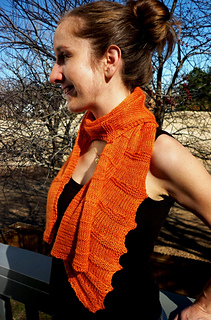






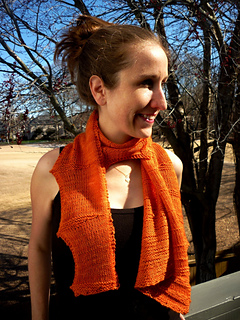
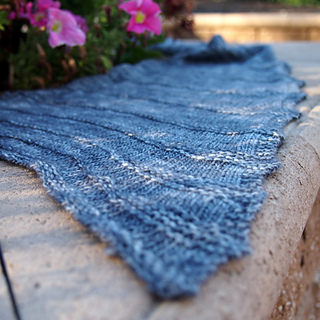





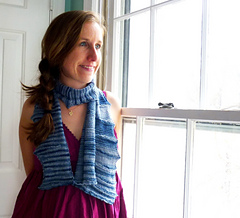




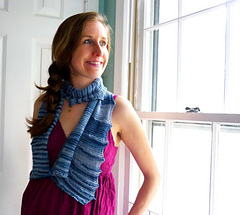
Gare du Nord
I love the great train stations of the nineteenth century. They are sometimes called ‘the cathedrals of the industrial age’ and it is their architecture that inspired this shawlette. The asymmetric shape reminds me of the support structures underneath the awnings and massive arched roofs of the stations, which were both functional as well as decorative. Texture in the shape of garter stitch ridges and small sections of short rows keeps the knitting interesting, while the simple stockinette stitch shows off the beautiful colors of hand-dyed yarns. Taking just one skein of a fingering or sock yarn, Gare du Nord knits up surprisingly quickly. As the short rows require no wrapping this would make a good project for knitters who are new to this technique.
FINISHED MEASUREMENTS
Length along top after blocking: 50 inches or 127cm.
Depth from top edge to bottom edge on left side after blocking: 13 inches or 33cm.
Depth from top edge to bottom edge on right side after blocking: 4 inches or 10cm.
YARN USED TO MAKE SHAWLETTES PICTURED ON THE PATTERN’S WEBSITE
Orange shawlette: Sweet Georgia Tough Love Sock 80% superwash wool, 20% nylon; 425yds/389m per 100g; color: Pumpkin; 1 skein.
Blue shawlette: Cascade Heritage Paints 75% merino wool, 25% nylon; 437yds/400m per 100g; color: Seattle Blues; 1 skein.
MATERIALS NEEDED
Fingering or sock weight wool blend or 100% wool yarn, approximately 375yds (343m).
1 US #5/3.75mm circular needle of 29” (75cm) in length or longer or size needed to obtain gauge. Alternatively, 1 pair of US #5/3.75 straight needles or size needed to obtain gauge.
1 darning needle.
GAUGE
22 sts/30 rows = 4 x 4” (10 x 10cm) in stockinette stitch after blocking.
PATTERN NOTES
The shawlette is worked from side to side, beginning at the wide side edge on the left and working towards the narrower edge on the right. The garter stitch sections are worked with short rows and these sections can be shaped into points when the shawlette is blocked.
15245 projects
stashed
11818 times
29780 projects
stashed
27162 times
- First published: February 2013
- Page created: March 1, 2013
- Last updated: February 3, 2025 …
- visits in the last 24 hours
- visitors right now





